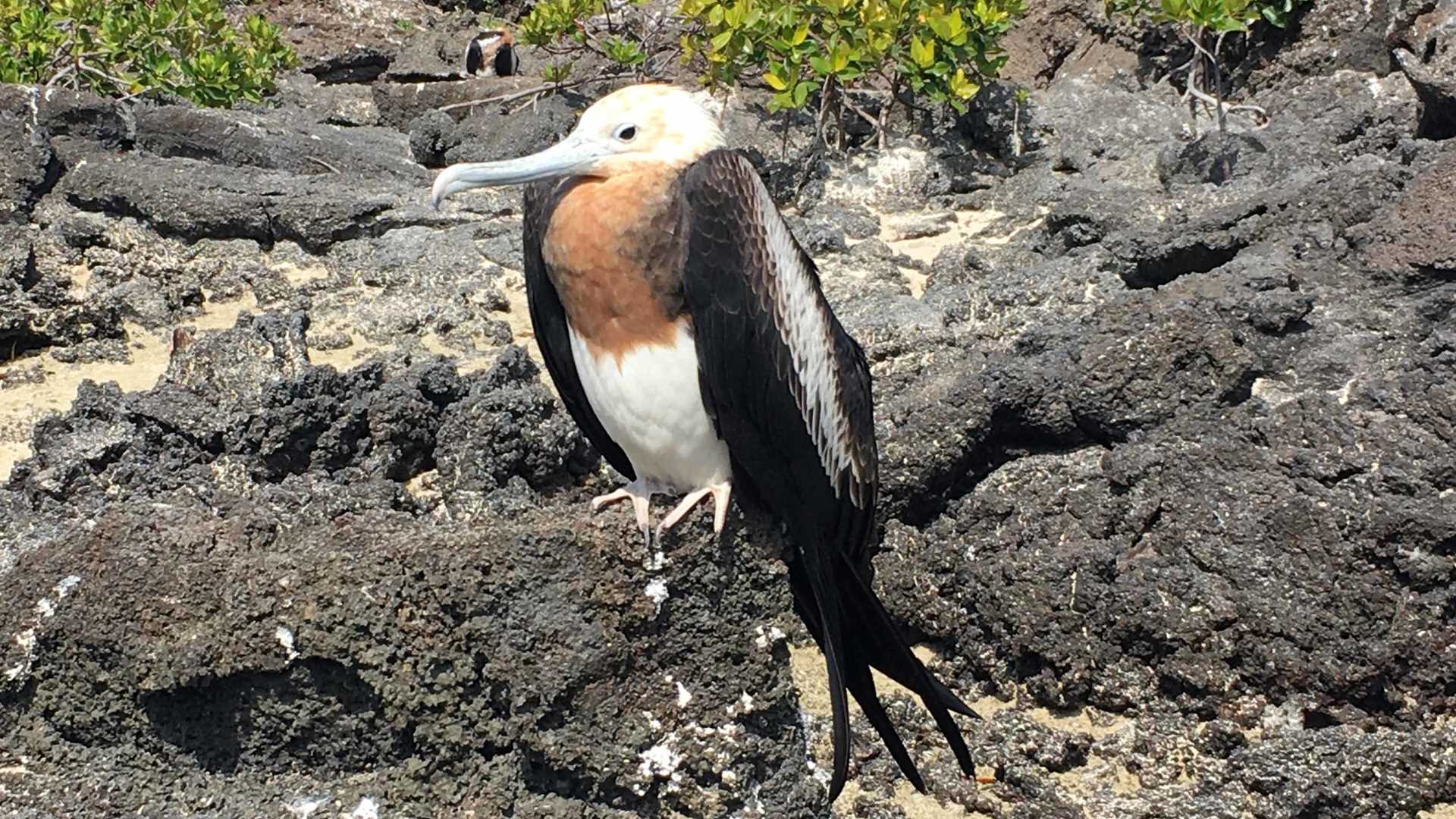We left behind Sombrero Chino Island, and navigated all night long, crossing the Equator Line south to north. We arrived at Genovesa, or Tower Island, one of the northern islands in the archipelago. An impressive caldera has been opened to the sea, and we anchored inside this stunning geological formation. This island has remained isolated from the rest of the islands, so Genovesa doesn’t have land reptiles or Galapagos hawks, but it is home to the rarest species of finches in the archipelago, such as the sharp billed ground finch (well known as vampire finch) and the large ground finch.
With the first beams of sun, we went to the outer decks to observe hundreds of seabirds flying above us! Genovesa is a paradise for birds, and of course for birdwatchers. In fact, more than a million birds live here (marine and land birds).
After breakfast, we disembarked at Darwin Bay on a beautiful white-sand beach covered with red mangroves. Red-footed boobies and frigatebirds were in these trees, while the sandy beach was occupied by swallow-tailed gulls and Nazca boobies, all in different stages of their nesting cycles. We saw frigatebirds in flight earlier, but today we were able to see them closer. Walking along the beach, we had the opportunity to see a new variety of prickly-pear cactus. Featuring spines as soft as hair, this cactus evolved without predators such as land reptiles.
We returned to National Geographic Endeavour II, to prepare for the next outing. Some of our guests enjoyed the rest of the morning on the beach, while snorkelers left Darwin Bay to go swimming along the caldera, observing a great amount of marine life such as trumpetfish, Moorish Idols, pompanos, white-tipped reef shark and the incredible hammerhead shark.
In the afternoon, we went to Prince Philip’s Steps with the important goal of finding the short-eared owl. We went straight to a cliff where thousands of storm petrels come to nest. Owls love to feed on petrels, so what better place to start our search? Success: we spotted two owls from a distance and one close to us, on top of a lava tube.
Just before the sunset, we went back onboard to behold the sunset coloring the walls of the caldera, remembering the incredible week and the incredible creatures that will be part of our memories forever.







